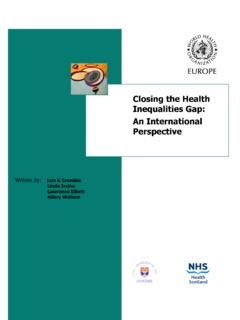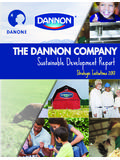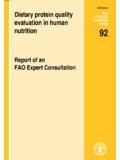Transcription of WHO Regional Office for Europe NUTRIENT …
1 WHO Regional Office for Europe NUTRIENT profile model . WHO Regional Office for Europe NUTRIENT profile model Abstract This publication describes a Regional NUTRIENT profile model for use and adaptation by Member States of the WHO European Region when developing policies to restrict food marketing to children. Keywords CHRONIC DISEASE. OBESITY. NUTRITION POLICY. DIET. MARKETING. CHILDREN. FOOD. Address requests about publications of the WHO Regional Office for Europe to: Publications WHO Regional Office for Europe UN City, Marmorvej 51. DK-2100 Copenhagen , Denmark Alternatively, complete an online request form for documentation, health information, or for permission to quote or translate, on the Regional Office web site ( ).
2 World Health Organization 2015. All rights reserved. The Regional Office for Europe of the World Health Organization welcomes requests for permission to reproduce or translate its publications, in part or in full. The designations employed and the presentation of the material in this publication do not imply the expression of any opinion whatsoever on the part of the World Health Organization concerning the legal status of any country, territory, city or area or of its authorities, or concerning the delimitation of its frontiers or boundaries. Dotted lines on maps represent approximate border lines for which there may not yet be full agreement. The mention of specific companies or of certain manufacturers' products does not imply that they are endorsed or recommended by the World Health Organization in preference to others of a similar nature that are not mentioned.
3 Errors and omissions excepted, the names of proprietary products are distinguished by initial capital letters. All reasonable precautions have been taken by the World Health Organization to verify the information contained in this publication. However, the published material is being distributed without warranty of any kind, either express or implied. The responsibility for the interpretation and use of the material lies with the reader. In no event shall the World Health Organization be liable for damages arising from its use. The views expressed by authors, editors, or expert groups do not necessarily represent the decisions or the stated policy of the World Health Organization. Contents Page Acknowledgements iv Introduction 1.
4 About the European NUTRIENT profile model 2. How to use this model 3. Definitions of terms used in this model 3. References 4. Annex 1. WHO Regional Office for Europe NUTRIENT profile model 5. Acknowledgements This publication has been prepared by the WHO Regional Office for Europe in collaboration with the Department of Nutrition for Health and Development, at WHO headquarters. Specific contributions have been made by Jo o Breda, Gauden Galea, Jo Jewell and Chizuru Nishida. Further significant contributions, review and comments have kindly been provided throughout the development of this publication by Professor Mike Rayner of the University of Oxford. Thanks also go to the European Network on Reducing Marketing Pressure on Children, led by the Norwegian Directorate of Health and involving 28 Member States, for their support and participation in the process of developing this model .
5 Iv Introduction In July 2013 the ministers of health of the WHO European and involves 28 Member States and is facilitated by the Regional Member States adopted the Vienna Declaration on Nutrition Office , has conducted some work related to NUTRIENT profiling. and Noncommunicable Diseases in the Context of Health 2020 Recent meetings of the Network have recognized the value (1). This Declaration acknowledged the high burden of disease of working towards a common NUTRIENT profile model for use caused by unhealthy diets in many countries of the Region and or adaptation by Member States in the European context. The expressed particular concern about the rise of overweight and Regional Office was requested to take action on this issue in obesity among children.
6 Seeking to develop a common approach to NUTRIENT profiling across the Region. It is recognized that this work has implications The Vienna Declaration included a commitment to take decisive for the other Regional offices of WHO, and their collaboration has action to reduce food marketing pressure to children with been sought throughout. regard to foods high in energy, saturated fats, trans fatty acids, free sugars or salt and to develop and implement common In December 2013, an expert meeting was held to agree on policy approaches that promote, among other things, the use of the principles and necessary steps in developing a common common NUTRIENT profiling tools. The development of a Regional NUTRIENT profile model (6) and to allow participants to draw NUTRIENT profile model as a common tool for use or adaption by on the lessons learned by those countries that have already Member States across Europe (on a voluntary basis and taking developed NUTRIENT profile models for the purpose of restricting into account individual national circumstances) has since been the marketing of foods to children.
7 Following this meeting, the identified as a key activity in the European Food and Nutrition Regional Office developed a proposal for a model and conducted Action Plan 2015 2020 (2). a series of consultations on the draft with Member States (at the technical level), including in-country pilot testing and a face-to- This NUTRIENT profile model has been developed by the WHO face consultation during a meeting of the European Network on Regional Office for Europe in response to this mandate and Reducing Marketing Pressure on Children, held in March 2014. has been specifically designed for the purpose of restricting the The following countries have been actively engaged at various marketing of foods to children. A 2013 report by the Regional stages of the consultation process: Albania, Austria, Bulgaria, Czech Office indicated that few countries in the European Region have Republic, Denmark, Estonia, Finland, Hungary, Israel, Norway, fully implemented restrictions on the marketing of foods to children Poland, Portugal, Serbia, Slovenia, Switzerland and the former (3).
8 One of the reasons for the less than optimal progress in policy Yugoslav Republic of Macedonia. Other countries have expressed development may be the difficulty in overcoming the challenge of an active interest. classifying foods for which marketing should be restricted, which in turn results from the lack of an appropriate NUTRIENT profile The in-country pilot testing involved countries applying the model or other means of classifying foods. A handful of countries proposed model to a nationally generated list of between worldwide have developed, or are developing, NUTRIENT profile 100 and 200 foods that are either: (i) frequently marketed to models. Of the 53 countries in the Region, only Denmark, Ireland, children, or (ii) commonly consumed (ideally a combination Norway and the United Kingdom have used a NUTRIENT profile of both).
9 Countries were asked to comment on the food model in connection with marketing restrictions. categories, the NUTRIENT thresholds, the proposed exclusions and prohibitions, and to confirm that the model categorized foods WHO has been working to help Member States develop NUTRIENT in line with national food-based dietary guidelines. Countries profile models since 2009. A Guiding Principles Framework and responding to the consultation found the food categories and Manual has been developed and field-tested in six different NUTRIENT thresholds to be largely appropriate and only proposed countries (4).The first edition is due to be published shortly and a minor modifications. There were some significant differences in second edition, incorporating feedback from the workshops and the nutritional quality of frequently advertised and commonly field-testing, is planned.
10 WHO has also developed a catalogue consumed foods that countries reported, indicating that of NUTRIENT profile models containing details of NUTRIENT profile the marketing environment varies across the Region. Some models that conform to certain standards (5). countries reported food products being marketed or consumed with very high levels of nutrients of public health concern. All The European Network on Reducing Marketing Pressure on countries were, however, supportive and felt that the model was Children, which is led by the Norwegian Directorate of Health appropriately strict for their national context. 1. About the European NUTRIENT profile model NUTRIENT profiling is the science of classifying or ranking foods not included within the food categories were taken from both according to their nutritional composition for reasons related to models and supplemented with further examples.















